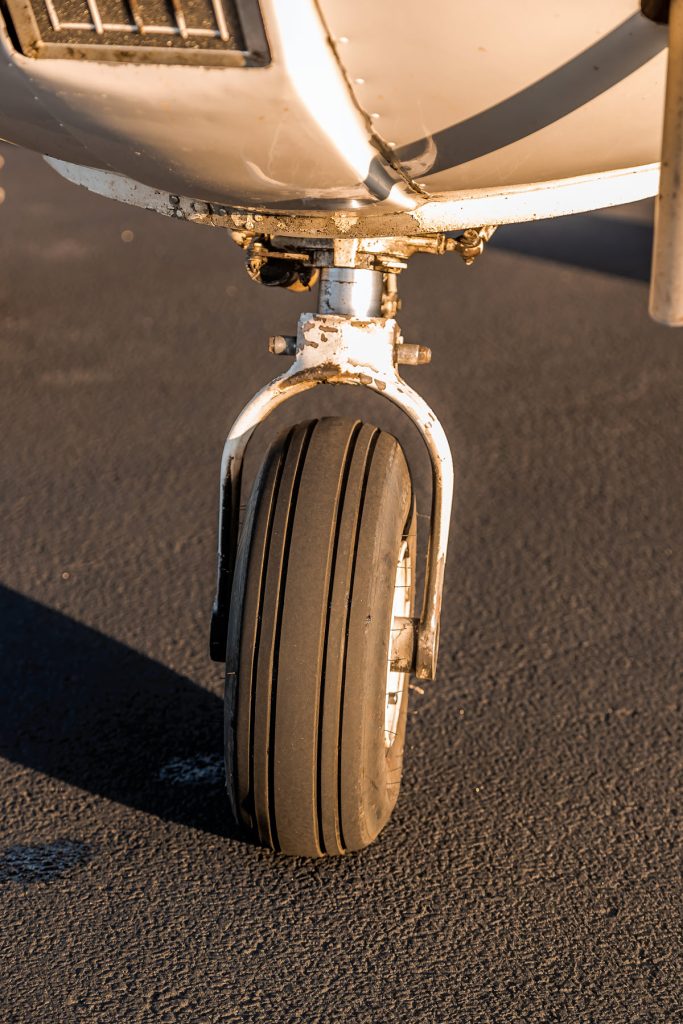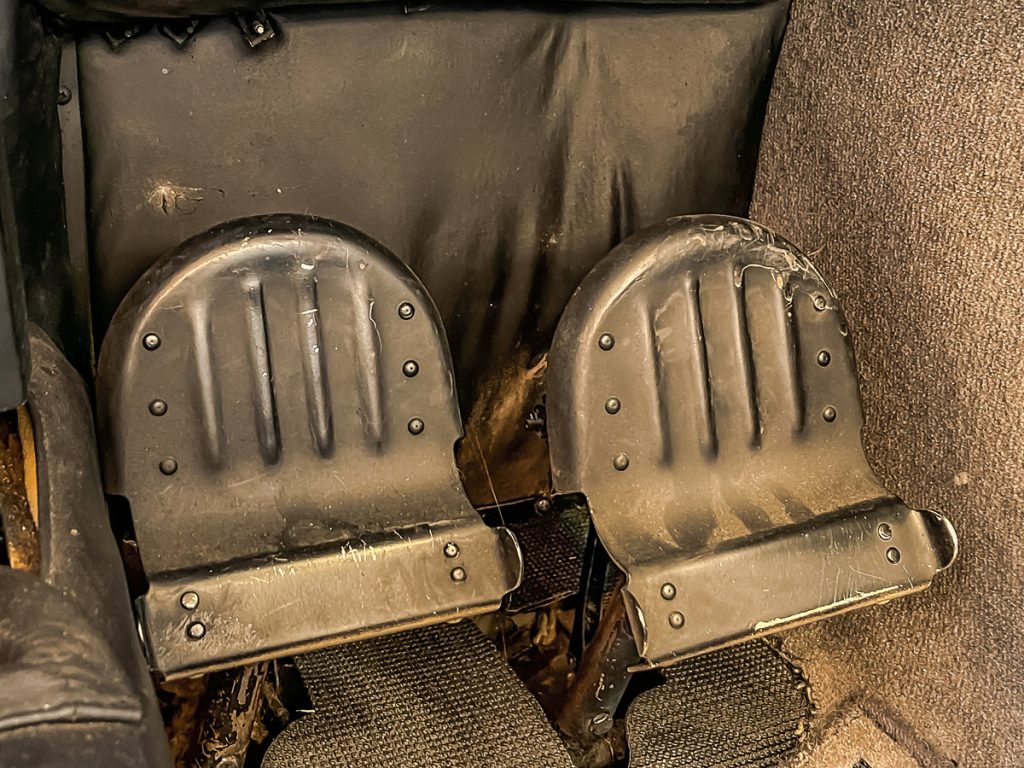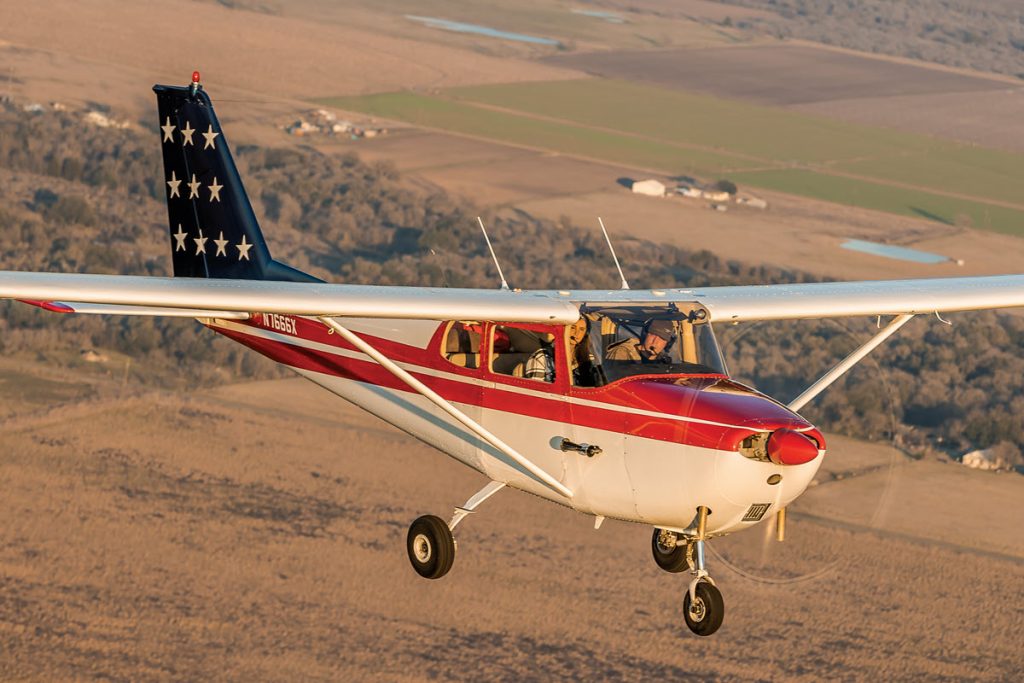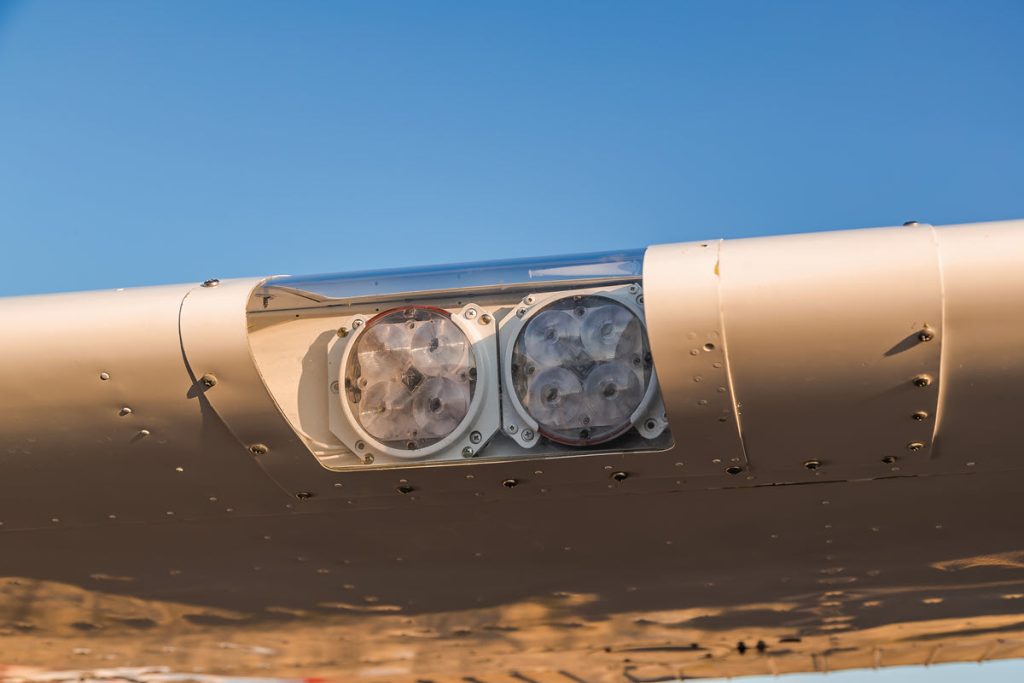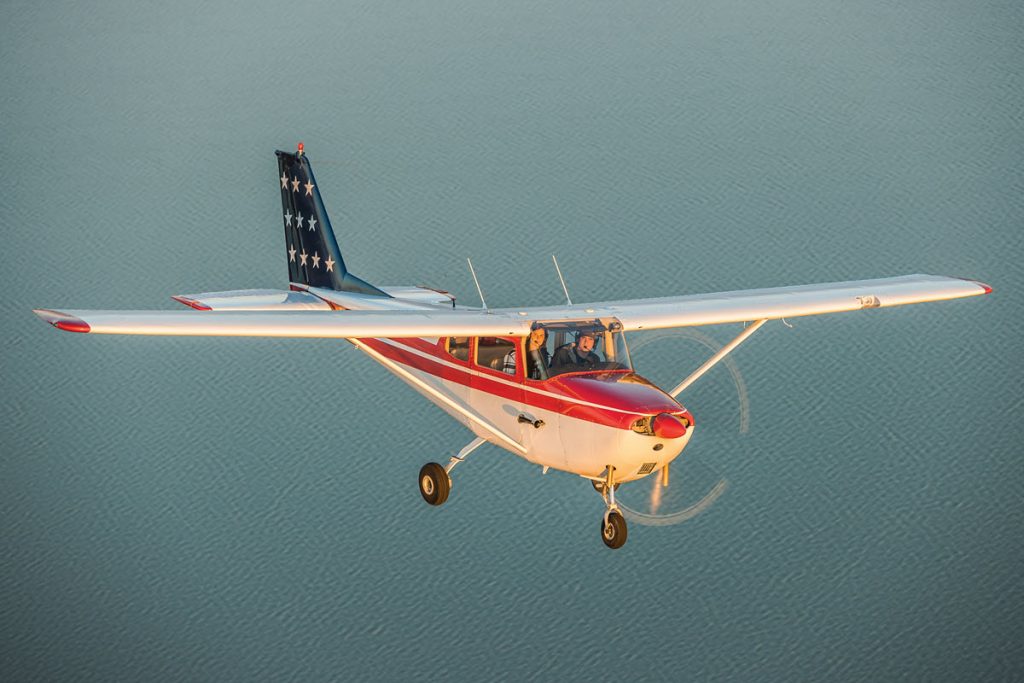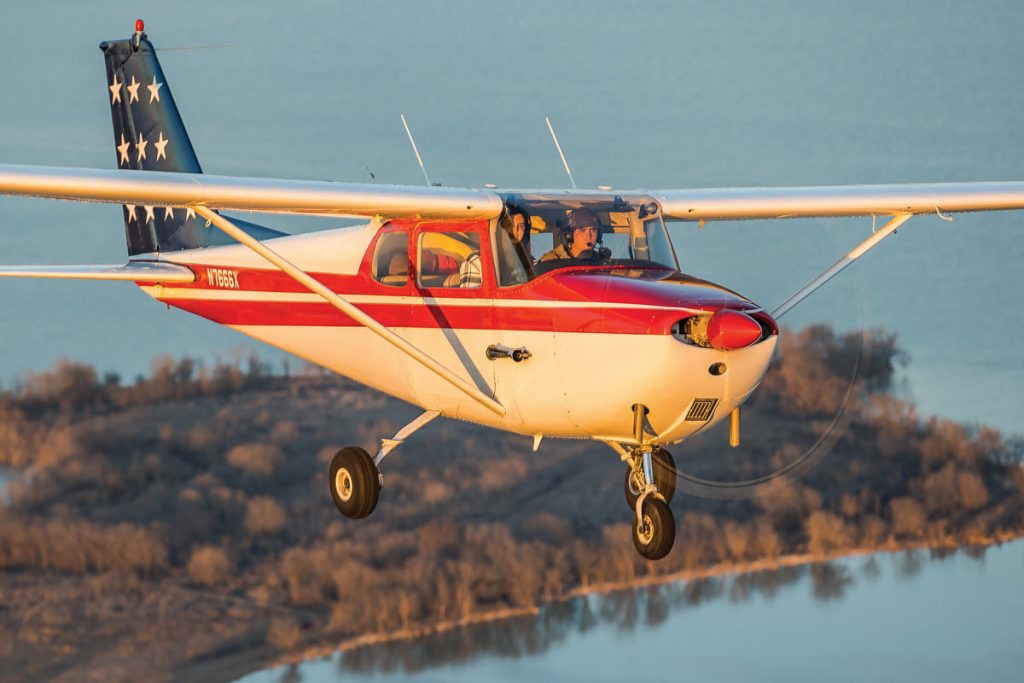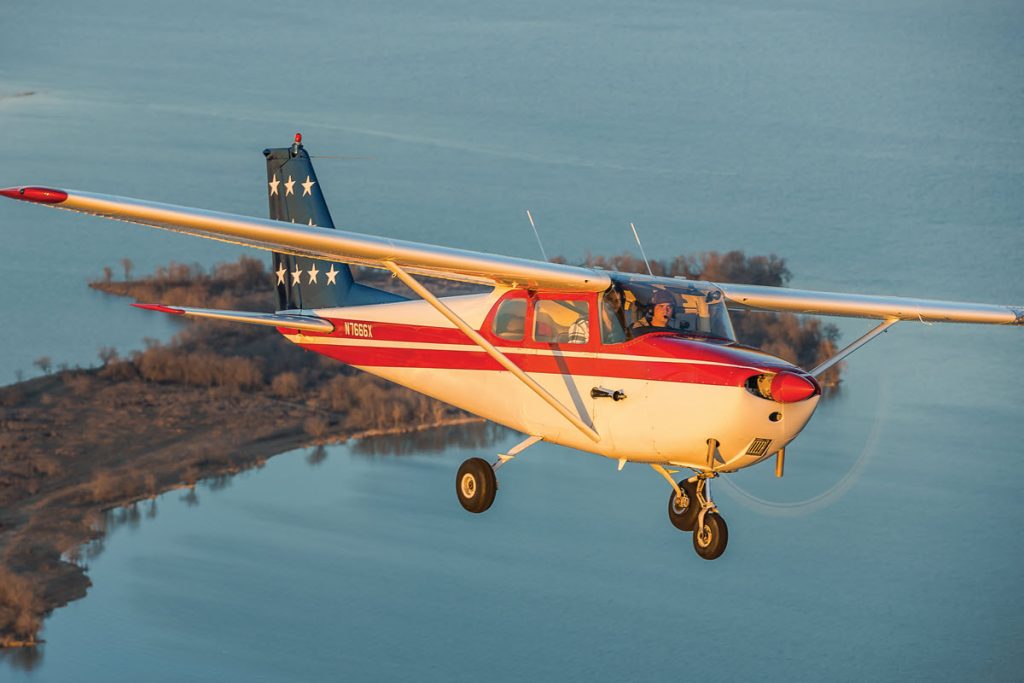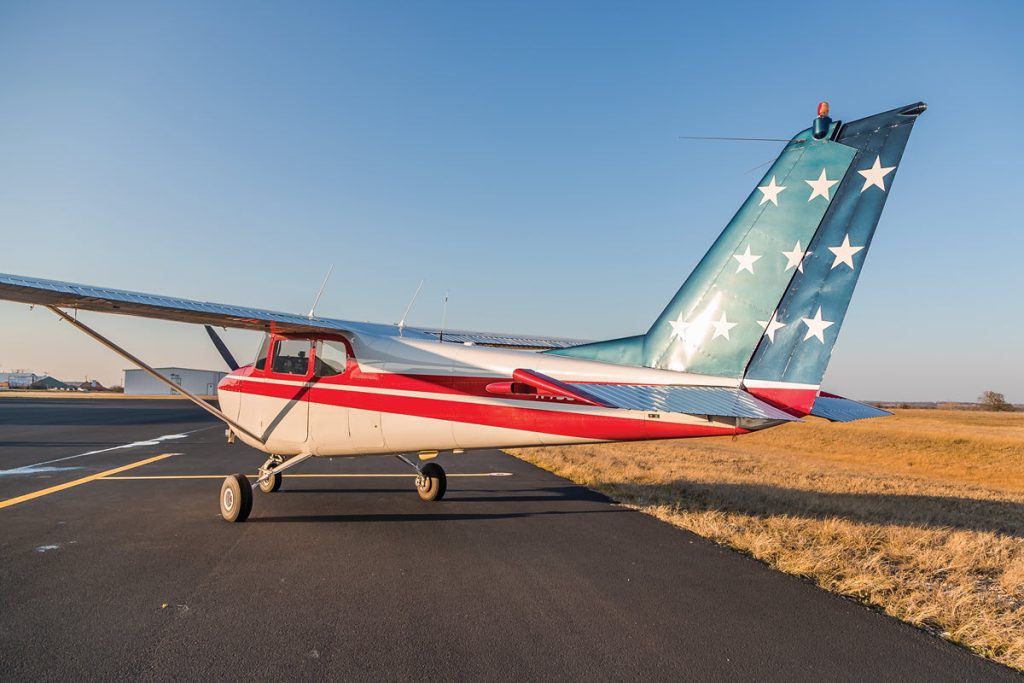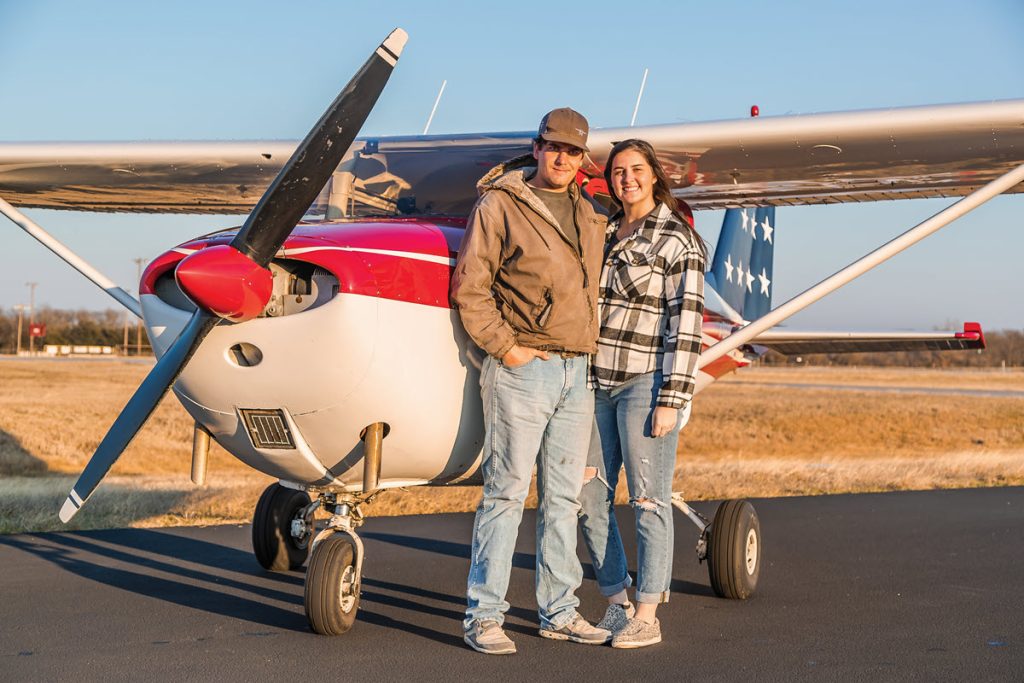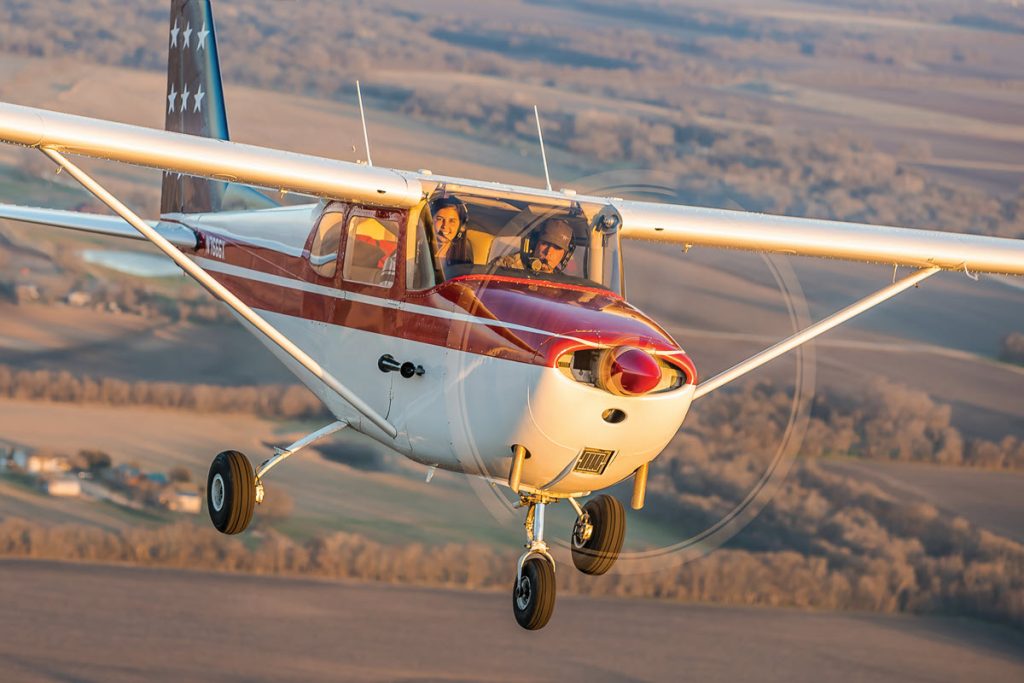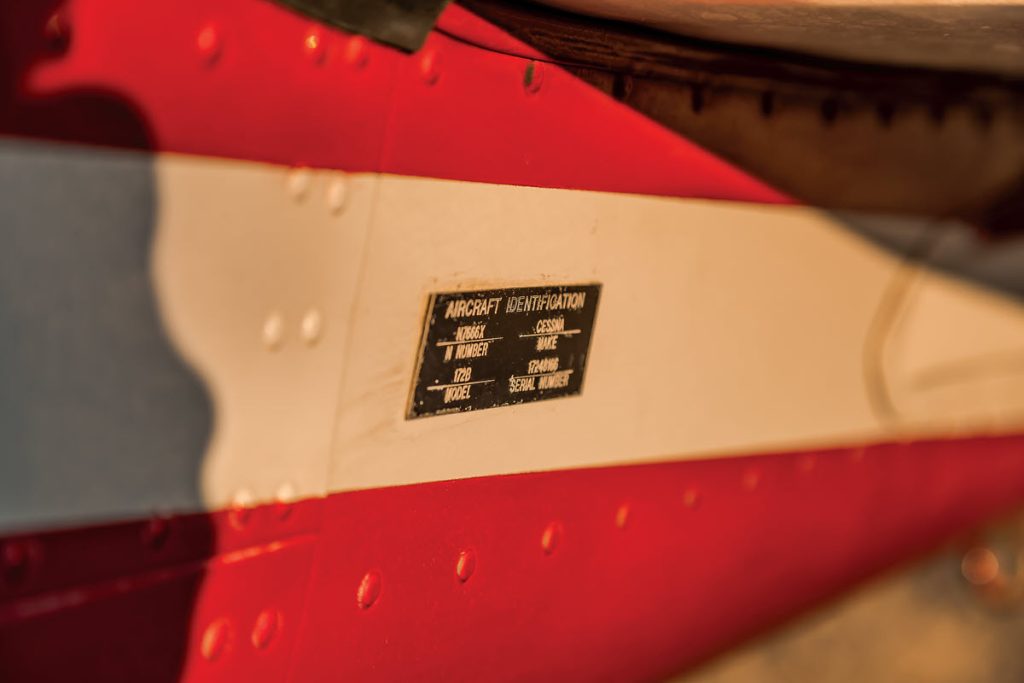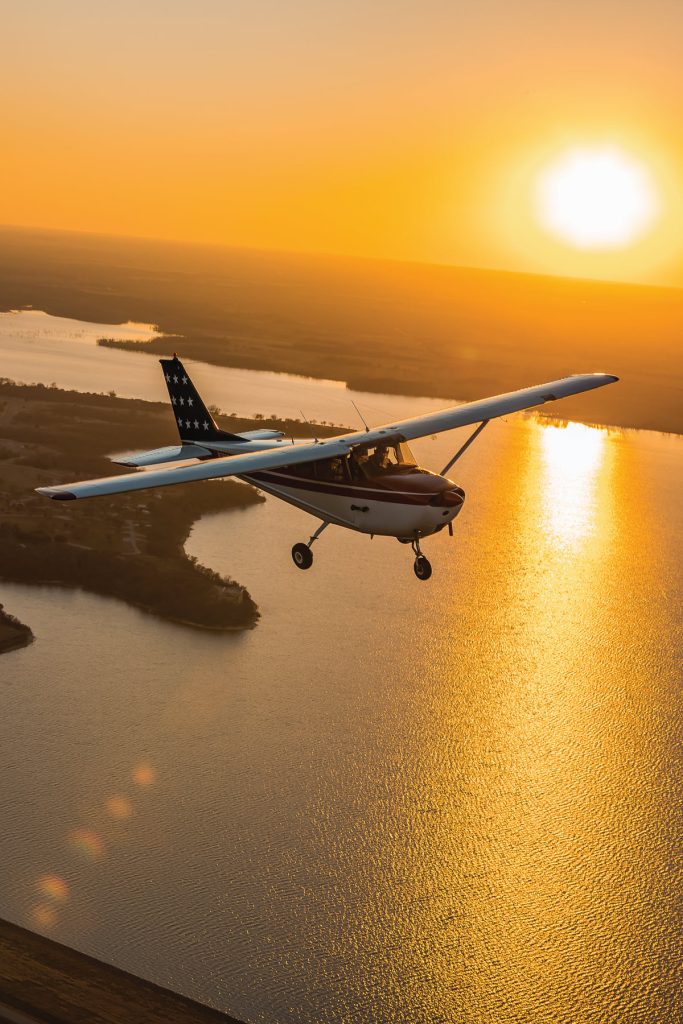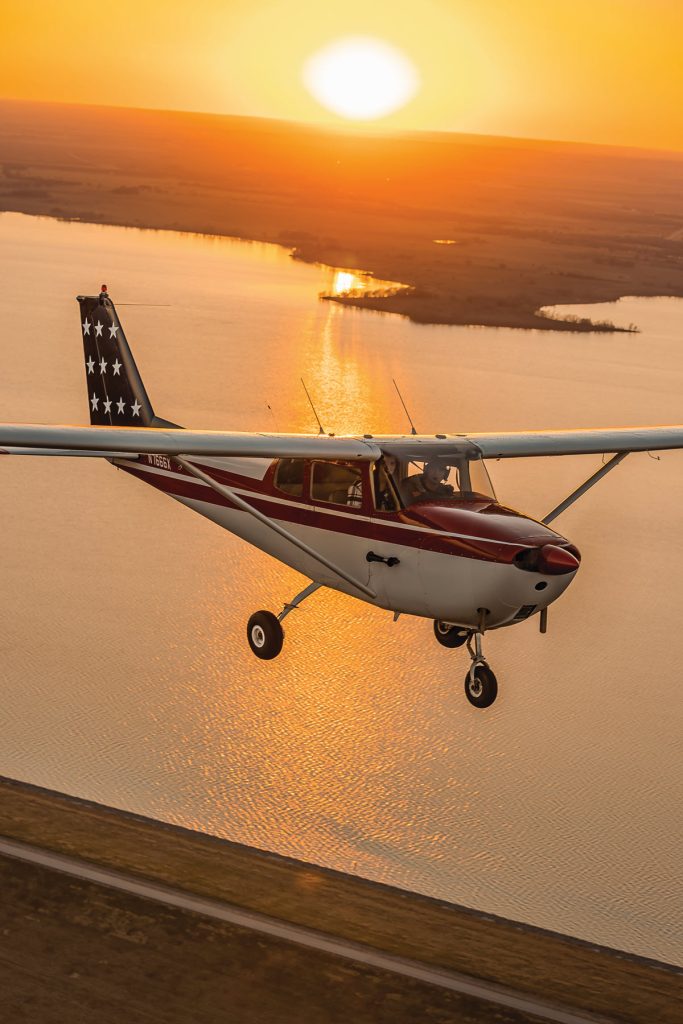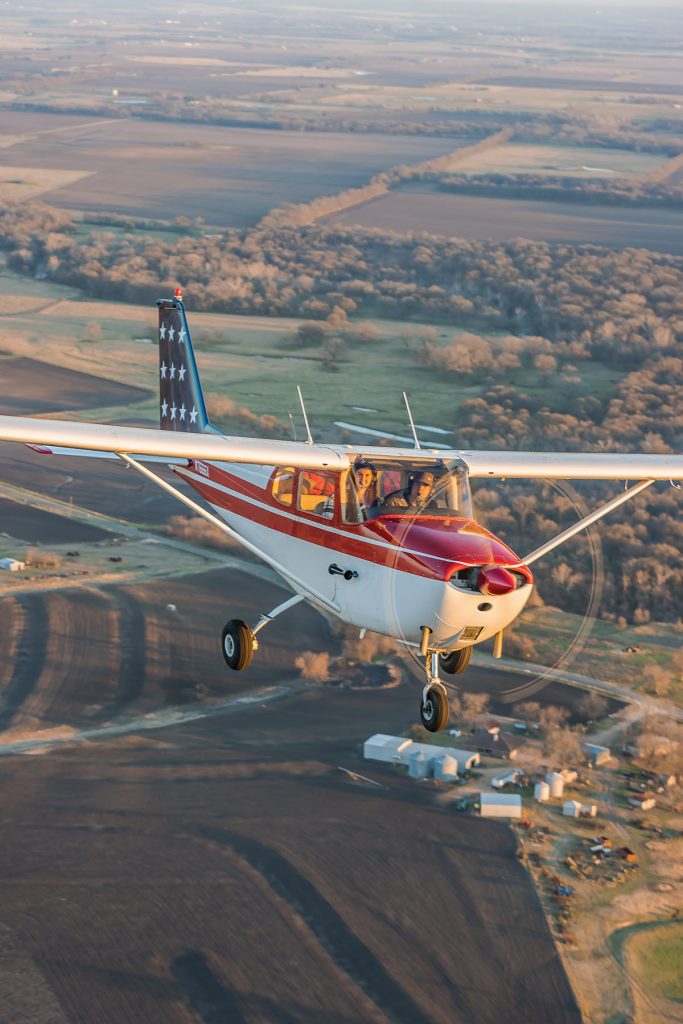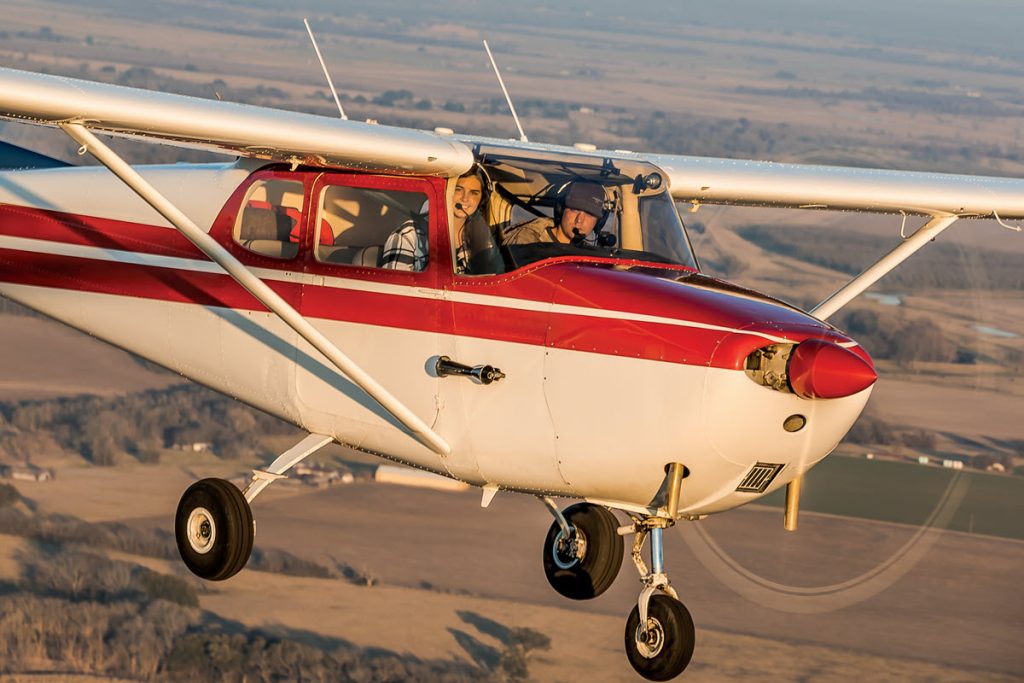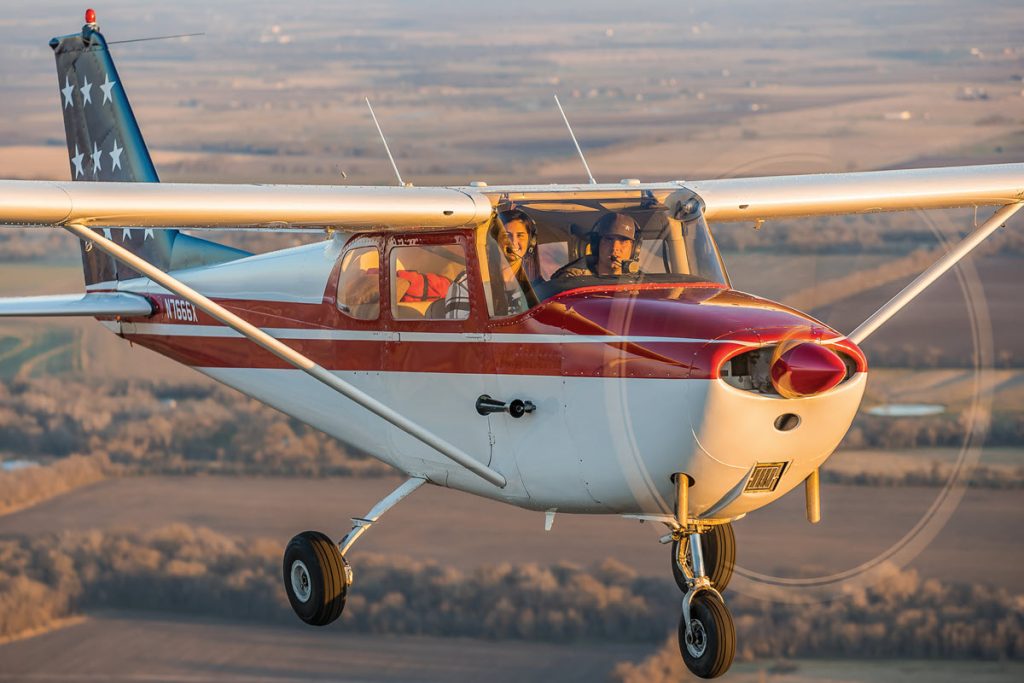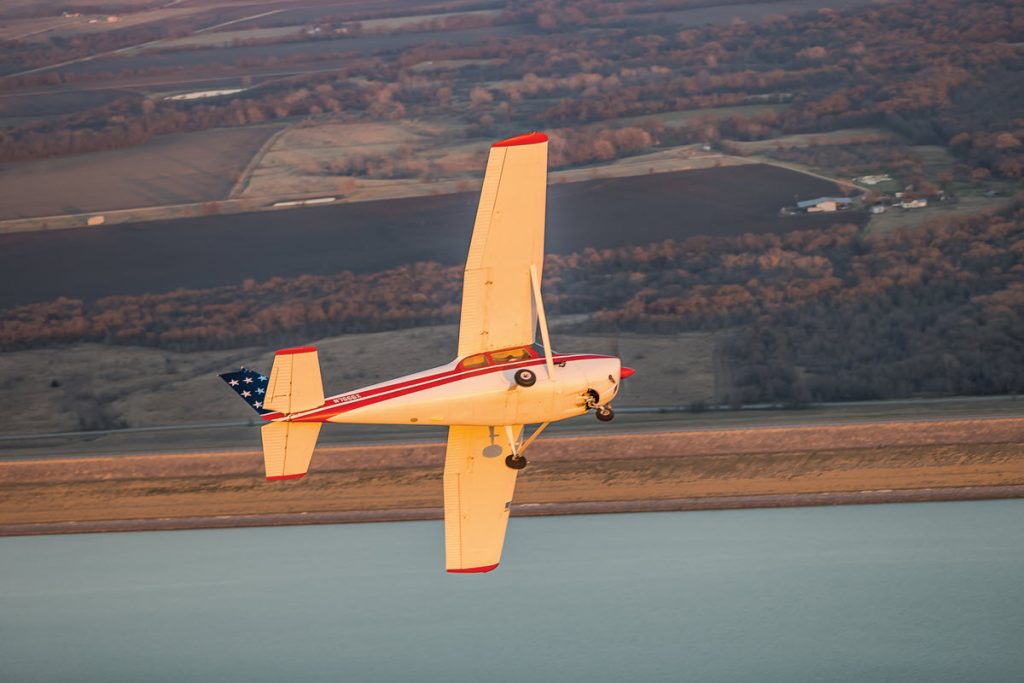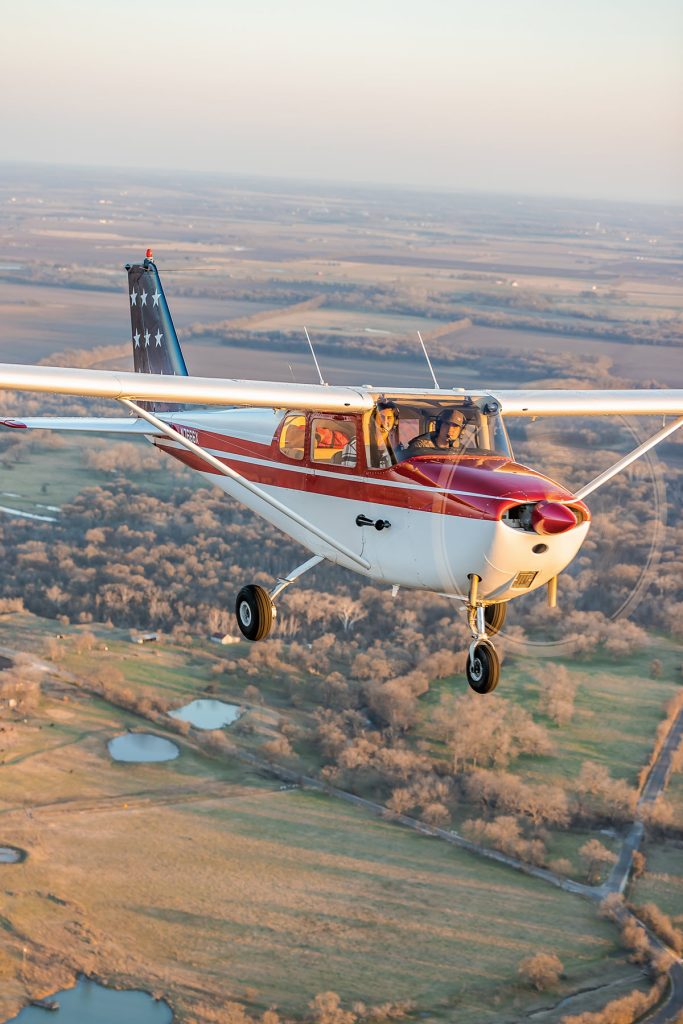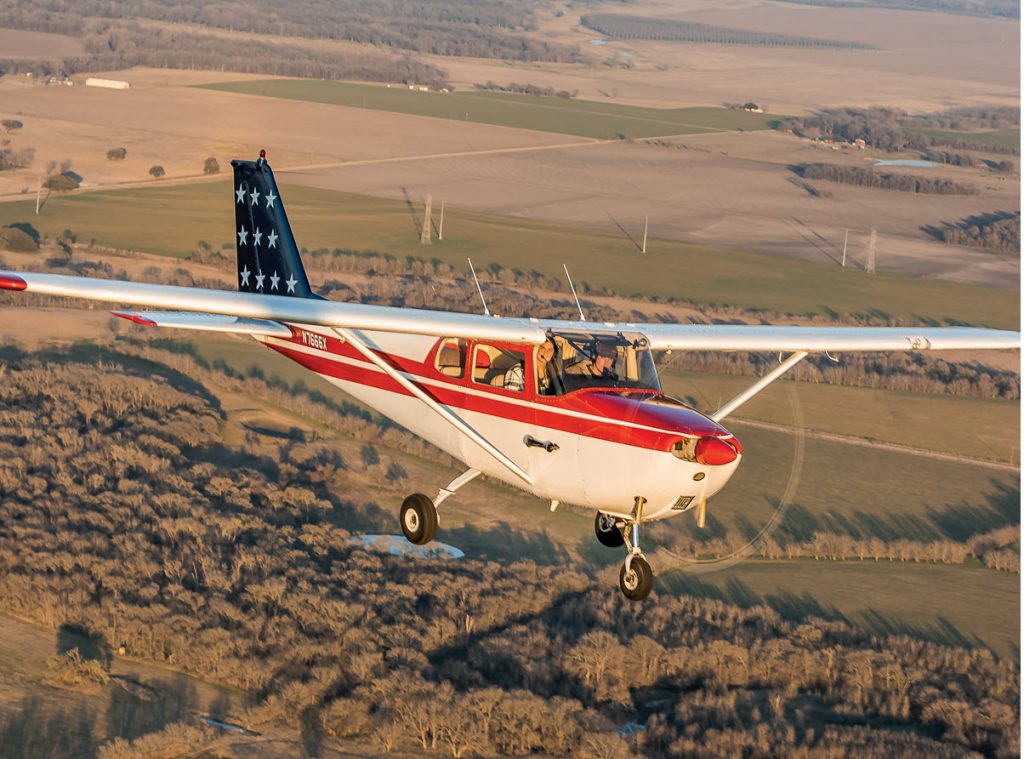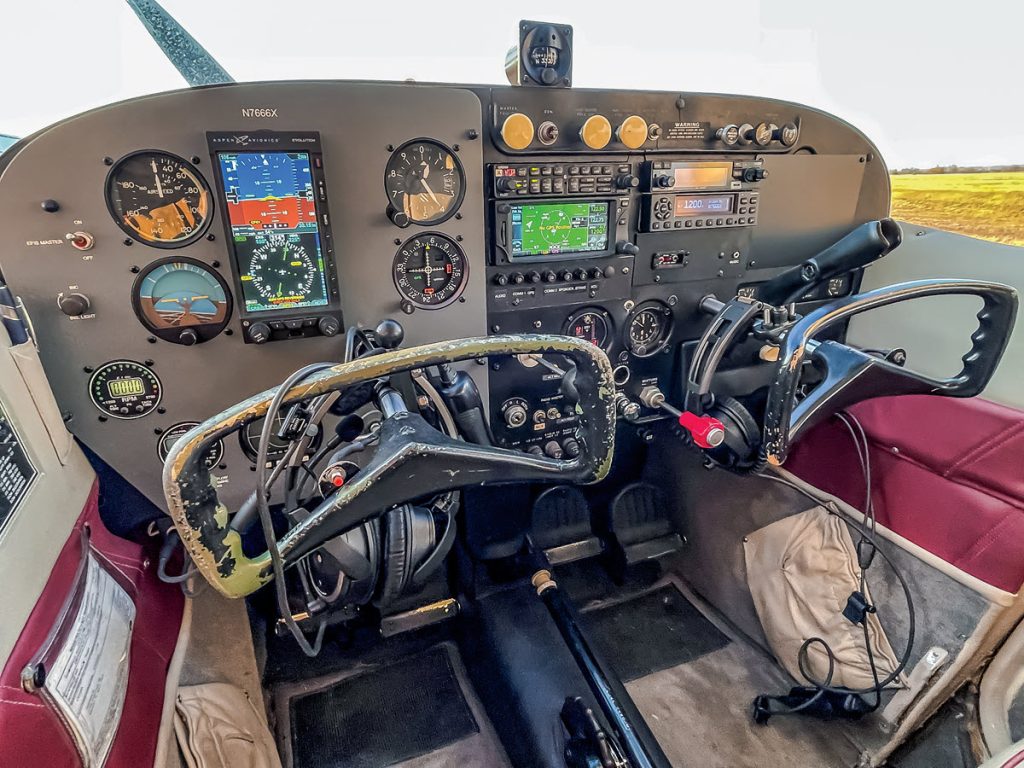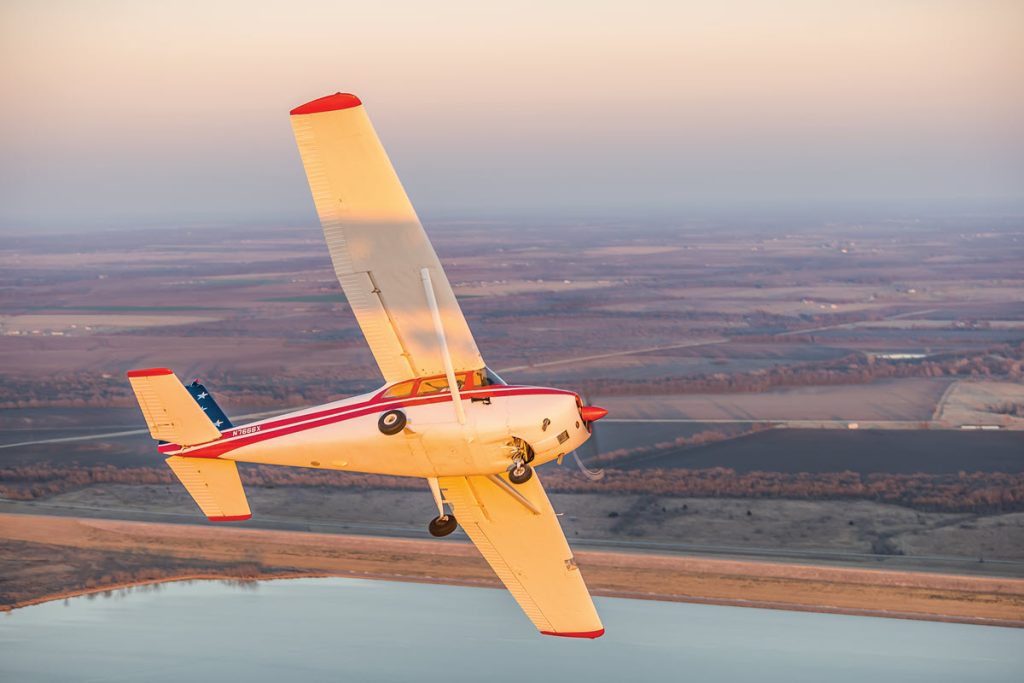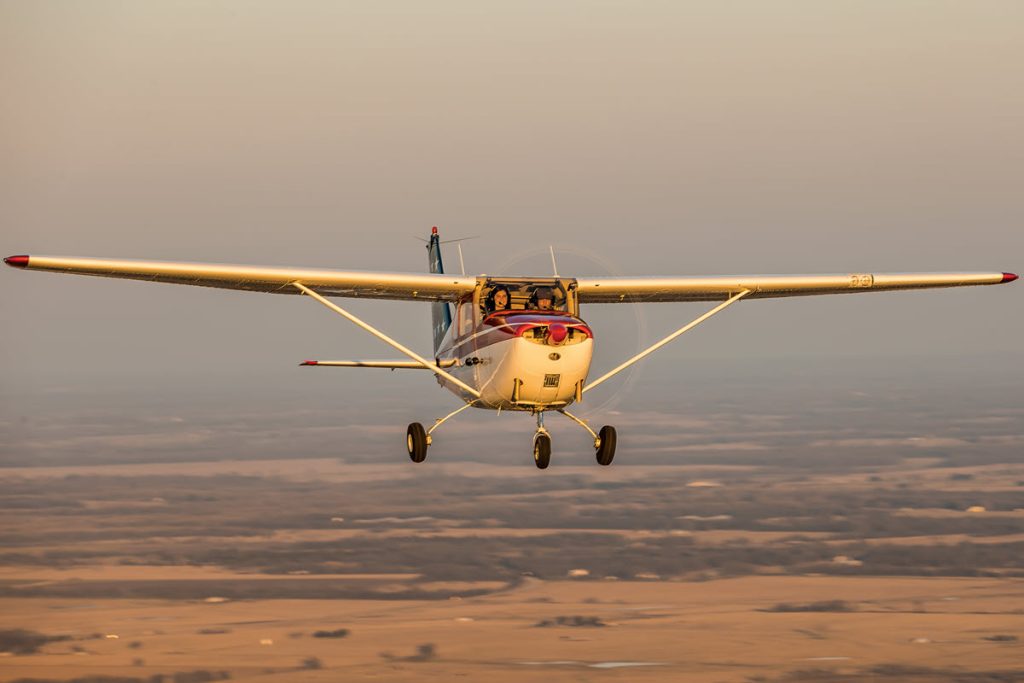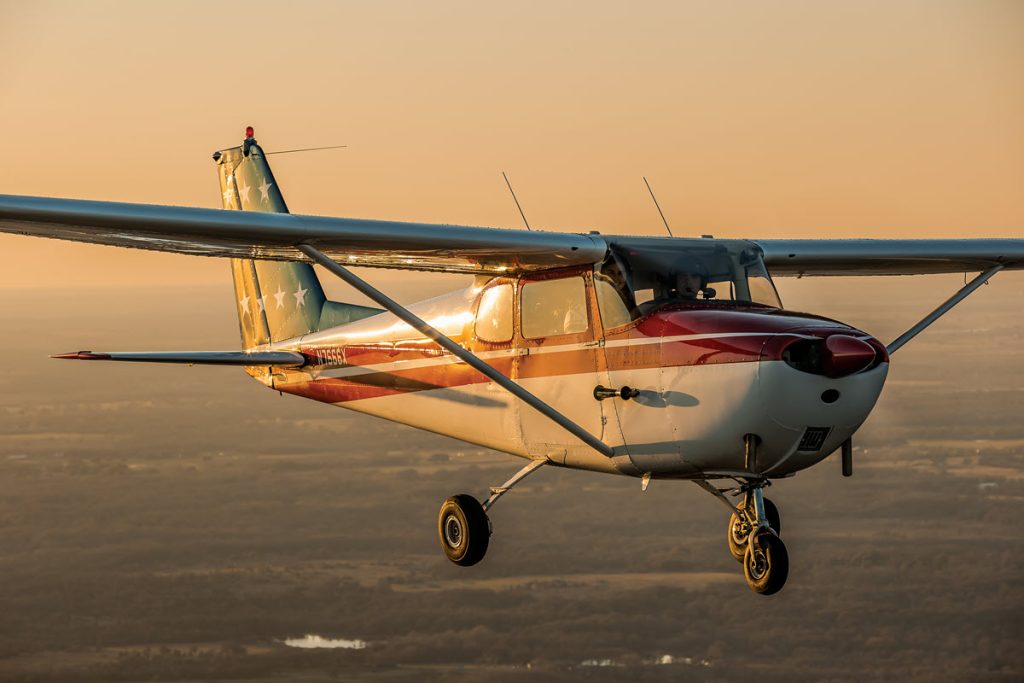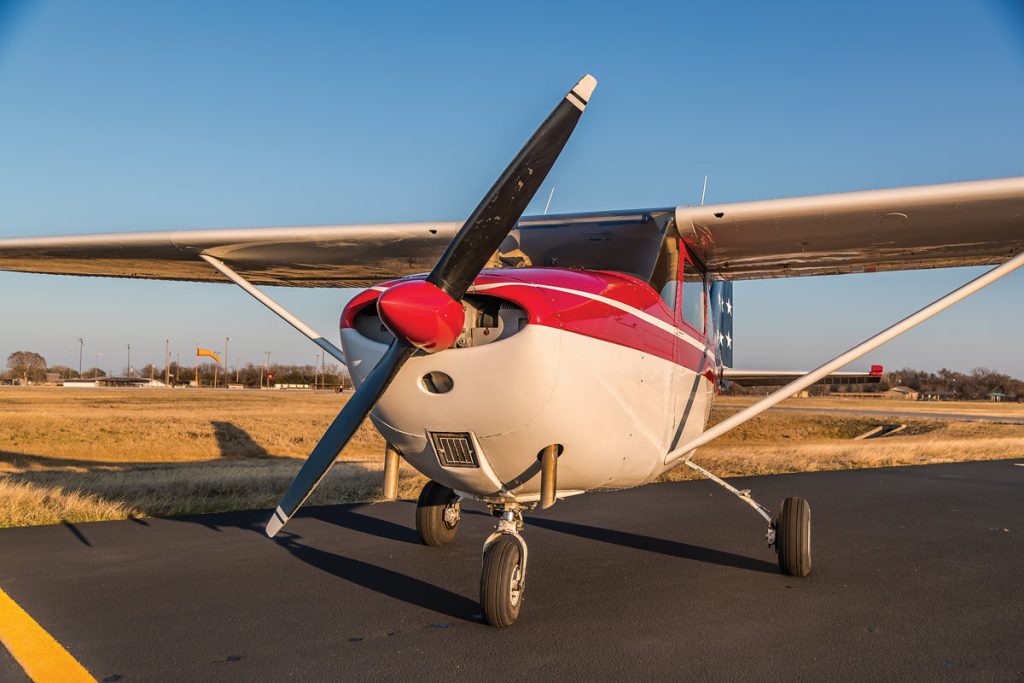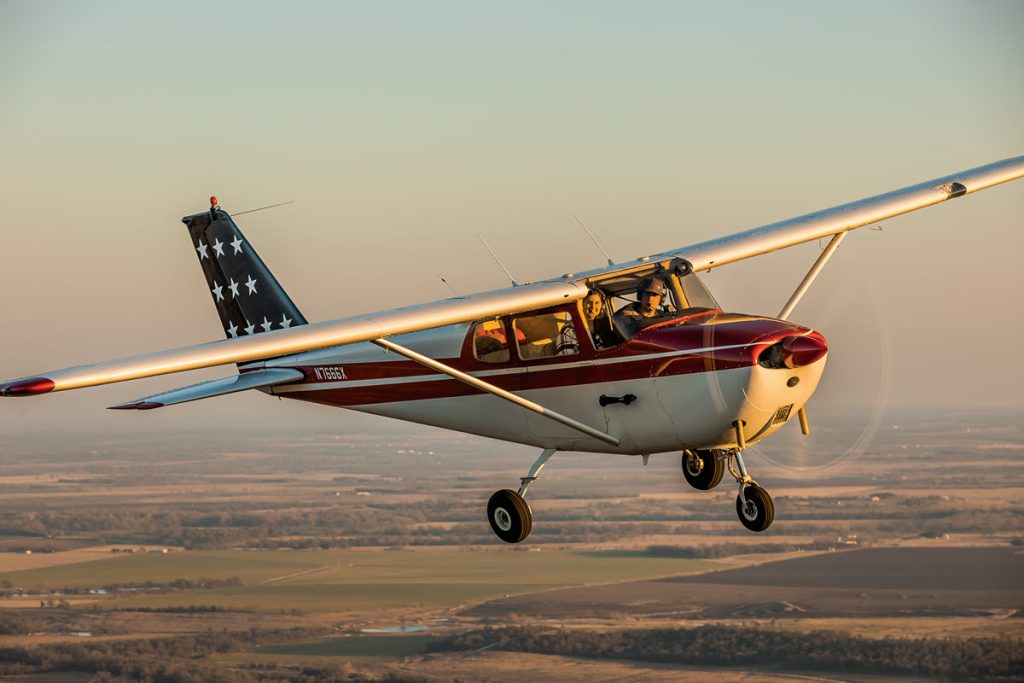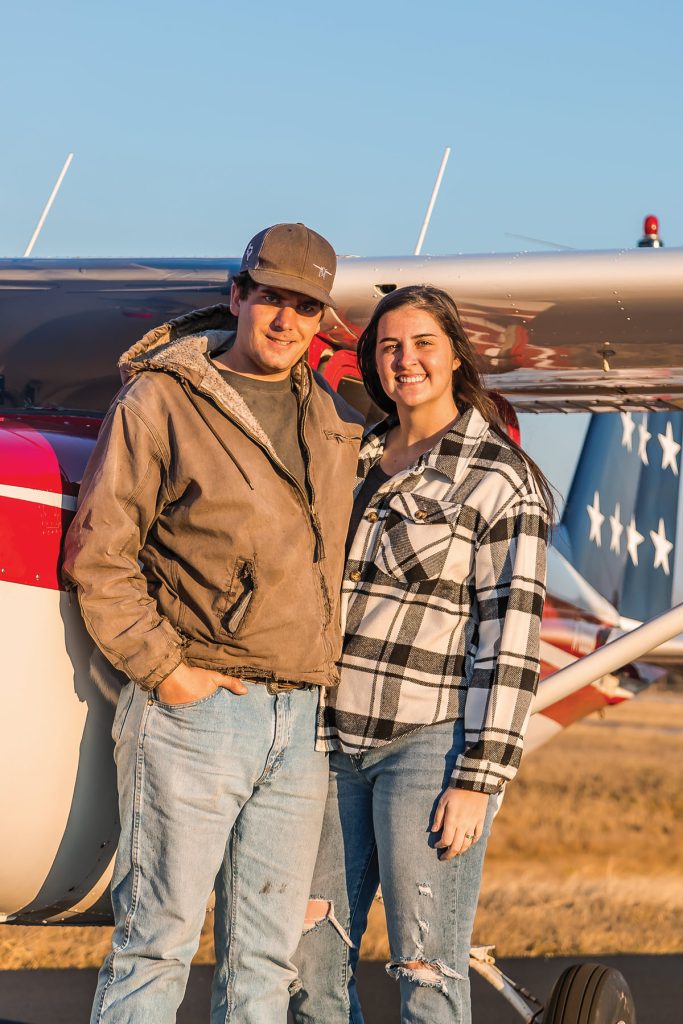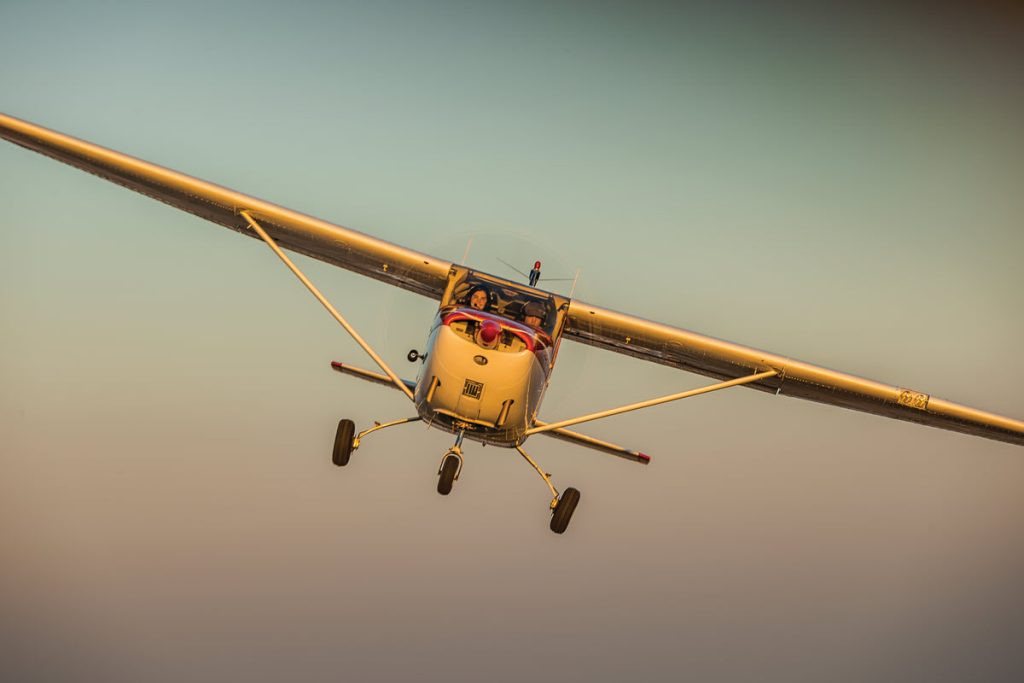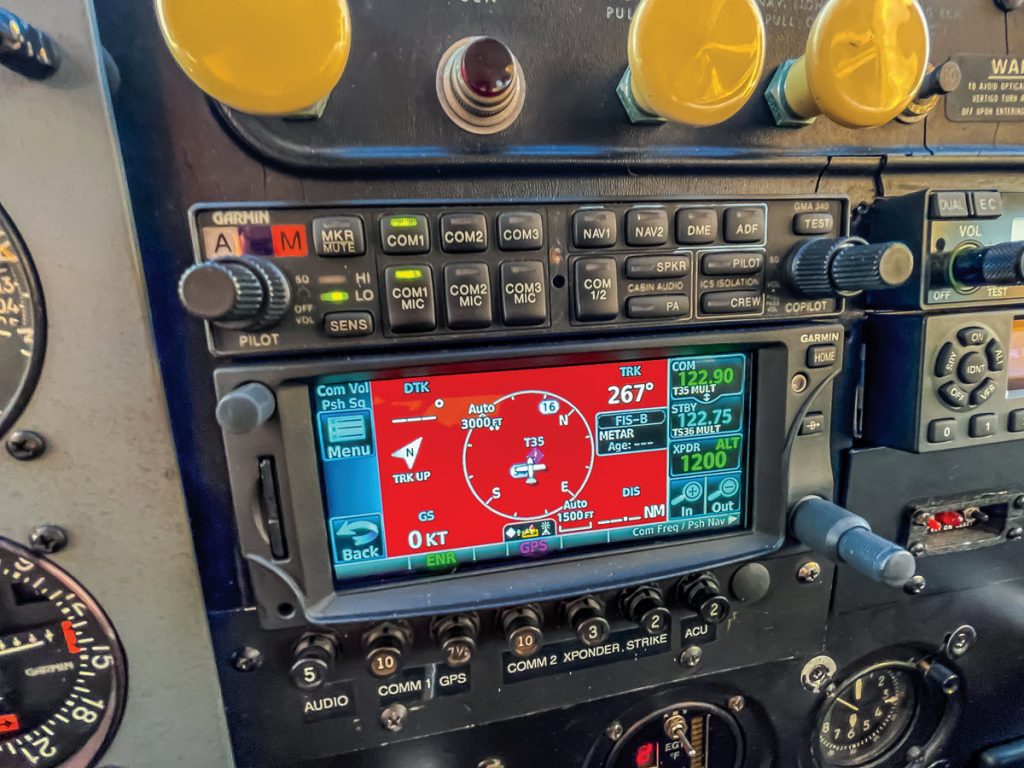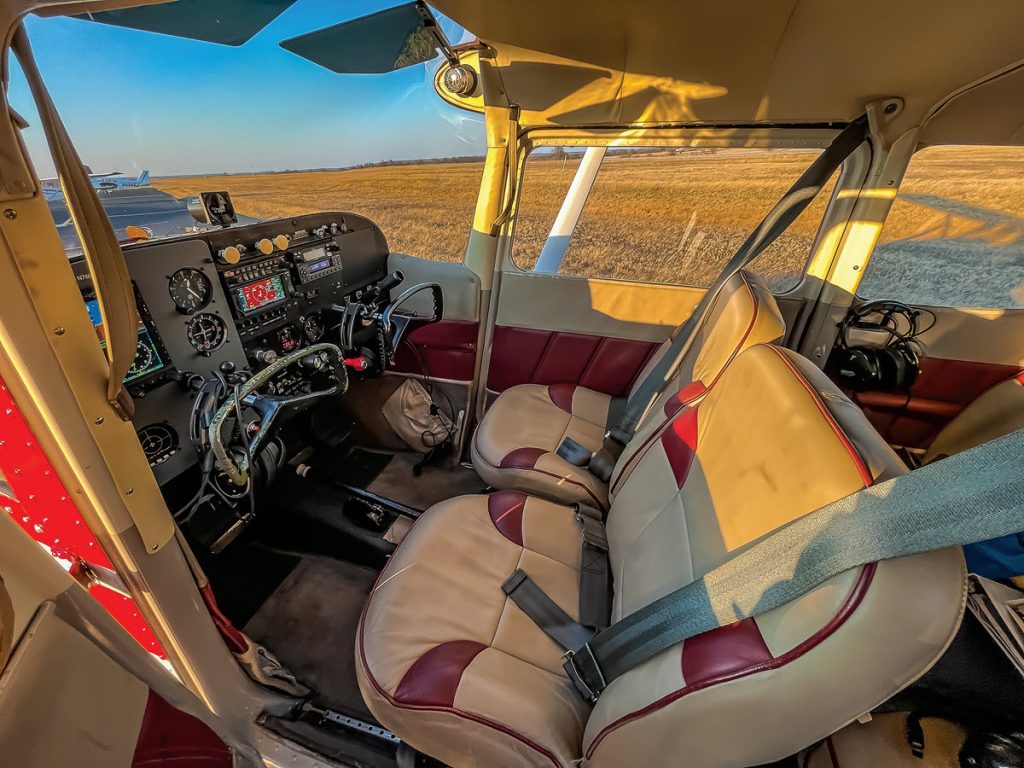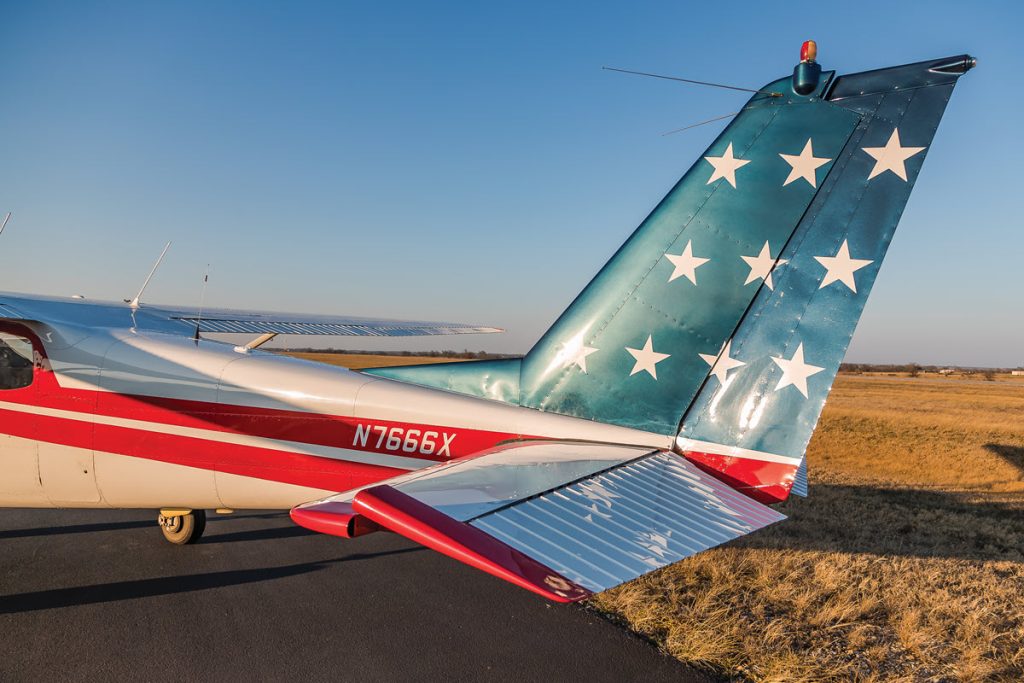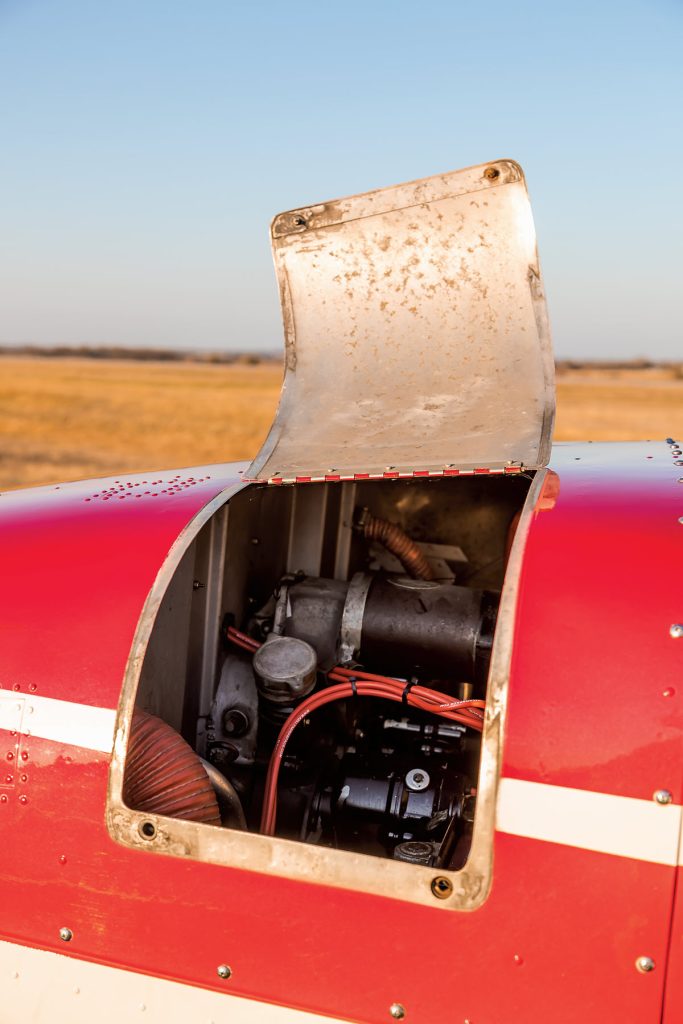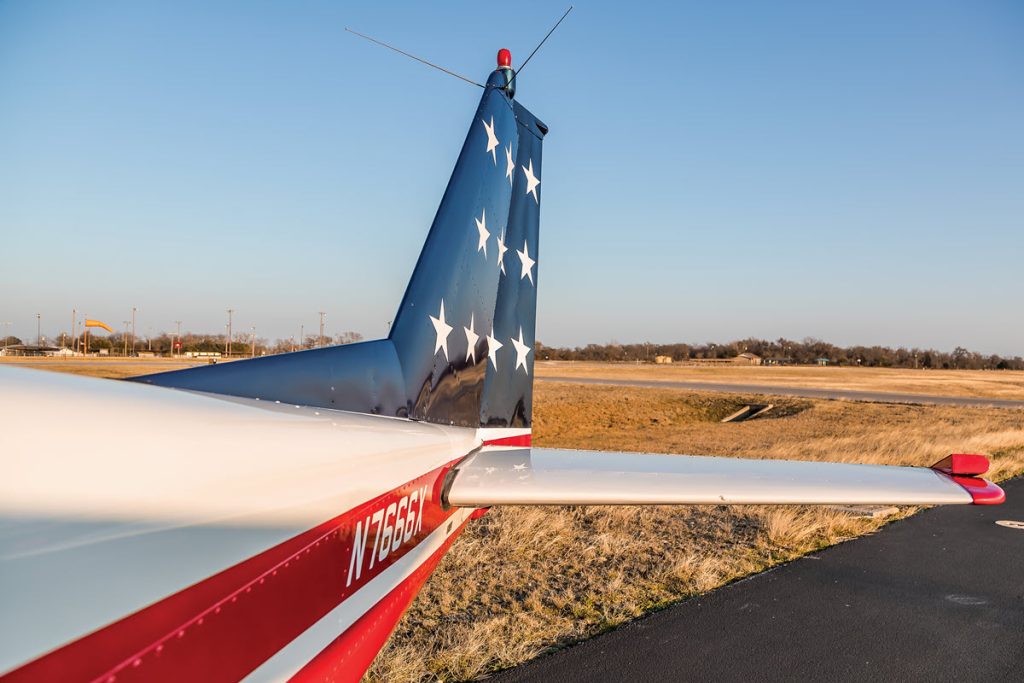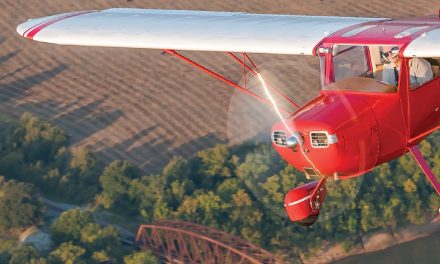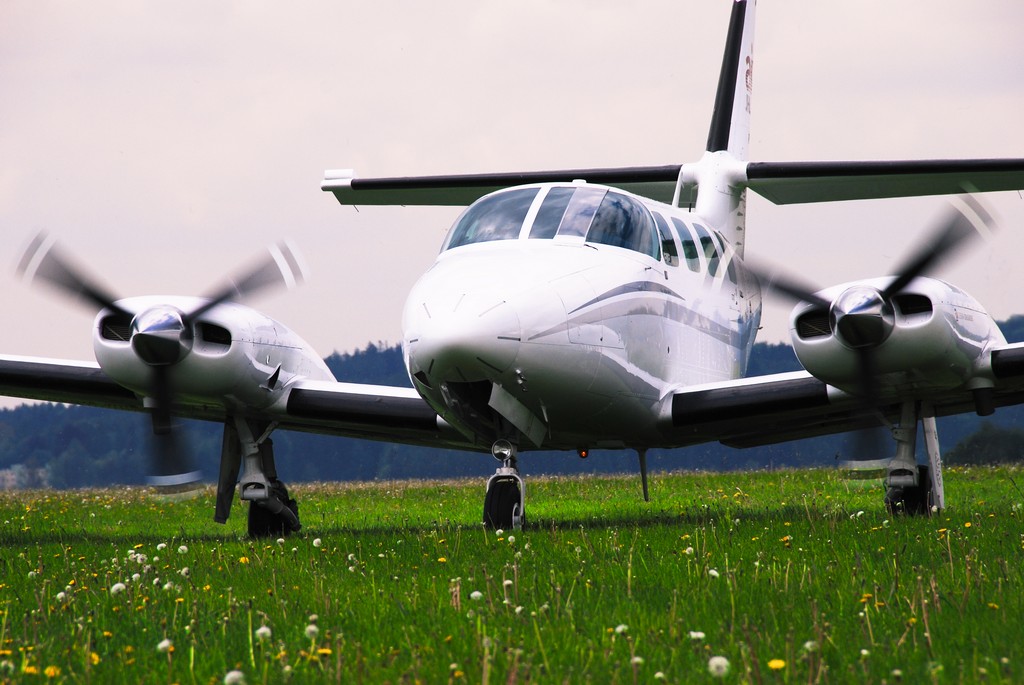
By Rocky Landsverk
Al Sidaras is proud to be an 80-year-old pilot, as well he should be. Most pilots have had to give up their flying hobby by then.
And in his decades of flying, he’s piloted pretty much every kind of airplane you can imagine: Cessna, Piper, Bonanza, King Air, Kodiak, Baron, Grumman, and more.
So when he gives advice about what makes for a great starter airplane or a great retirement airplane, we should all listen. And in his mind, a Cessna 150/152 is the way to start, and a Cessna 172 is the way to finish.
“The 172 is a good airplane to start with, but if you want to be even more economical, start with an older 150,” Sidaras said. “It’ll be the least expensive plane you can get, and you can be flying it for several years, then move to what you really want to get. And you can make the 150 into a relatively modern airplane.”
For his retirement airplane, Sidaras chose the 172 that graces our cover this month.
Sound like somebody who prioritizes practicality? Yes, Al is not the type who needs a lot. He comes from a simpler time and he values simpler things.
But he still wants a new autopilot!
About the Cover Plane
The patriotic paint job is obviously the first thing you notice about our cover plane, a 1961 Cessna 172B that was produced in late 1960 and was the first Cessna to be marketed as a Skyhawk. Al and his wife Frankie have owned this plane for about 10 years. Frankie, whom Al refers to as the wind beneath his wings, has named it Betsy Ross.
In part because of this article, Al and Frankie, who will be going to Oshkosh in July for what Al said is the 36th time, will be flying Betsy Ross the 172 to AirVenture for the first time. Said Frankie, “Flying Betsy is easily a one-man job, so I’m not really a copilot, but I’m always ready to go flying if there’s room for me. It’s a perfect aircraft to take on small trips, like treating friends to a ‘$100 hamburger’ in the next county.”
These older 172 planes are as reliable as they come, with a Continental O-300-C (or -D) that provides 145 hp and, with a rebuild or two along the way, are typically still elevating their planes 60 years later.
Sidaras owns several aircraft, and the 172 was added to the mix about 10 years ago specifically for its simplicity and ease of flying.
“We have three King Airs and a Kodiak,” said Sidaras, who also used to own two J-3 Cubs. “We have a couple of huge hangars with 94,000 square feet of hangar space.
“I looked for a 172 that I could retire with, and at my age, I have to fly with the open pilot warranty. So far, they haven’t sealed that off!”
Sidaras did all the upgrades on this plane, including the avionics, paint job, and interior. “We have one more thing to do, and that’s an autopilot,” he said. “The new class of autopilot is about $5,000 plus installation, and that’ll be about it for this plane.”
Among the upgrades on the panel:
- Insight Avionics Strike Finder (lightning detection)
- Garmin GTX 345 (ADS-B In/Out transponder)
- Garmin GTN 650 (GPS/nav/comm/MFD)
- Garmin GMA 340 (audio panel)
- Aspen Avionics Evolutio0n 100 Pro Max (primary flight display)
Sidaras said he doesn’t necessarily put Garmin in all his airplanes. “The King Airs either had Collins or King,” he said. “I put two brand-new Avidyne GPS units in the King Air 90, and I love those things. I might even like them better than the Garmins.”
As you can see in the pictures, the interior is very nice, done locally by a company in Georgetown, Texas. “It’s all leather, with wool carpeting,” Sidaras said.
As far as the engine goes, “I replaced the generator with an alternator. It still has the pull starter on it, but I have a new push-button starter in a box next to the airplane, and when the other one says goodbye, I’ll replace it.”
| Engine | Continental O-300-C (or -D) |
| Horsepower | 140 |
| Top Speed | 139 mph (121 kts) |
| Cruise Speed | 100 mph (87 kts) |
| Fuel Capacity | 42 gal |
| Range | 790 miles (@economy cruise) |
| Gross Weight | 2,200 lbs |
| Empty Weight | 1,255 lbs |
| Avg. Useful Load | 945 lbs |
| Takeoff Ground Roll | 780 feet |
| Takeoff Over 50 ft Obstacle | 1,370 feet |
| Landing Ground Roll | 680 feet |
| Landing Over 50 ft Obstacle | 1,115 feet |
| Rate of Climb | 730 fpm |
| Ceiling | 15,100 feet |
| Doors | 2 |
| Seats | 4 |
| Electrical | 14v |
| Dimensions (approx.) | |
| Cabin Width (at shoulder) | 40 inches |
| Length | 26.3 feet |
| Height | 8 feet |
| Wingspan | 36 feet |
These are the specs for a 1961 Cessna 172B, which was released in late 1960. Every vintage airplane is now different; do not use these specs to plan a flight. All data taken from the Standard Catalog of Cessna Single-Engine Aircraft (JP Media LLC).
Thoughts About Your Next Airplane
As a veteran pilot and plane owner, we asked Sidaras if he had any more advice for somebody who was planning their first, or next, airplane purchase. He said to pay careful attention to what has readily available parts. Sidaras suggests you get something that is still in production, like a 172 or a 182. “A couple of my favorites are little Grummans, but they’re not in production anymore,” he said. “All of a sudden, it’s very difficult to get pieces and parts.
“With the King Airs, nine times out of 10, I can have my parts by 10 o’ clock the next morning. And it’s getting much more difficult to get any kind of parts these days, so you really have to consider that when you choose the plane. Obviously, they’ve built enough Cessna 172s that the parts are going to be available for a long time.”
We also asked him for advice about how to keep flying into retirement. He said, in short, just keep flying. “First off, you’ve gotta love it,” he said. “Number two, you’ve got to do a lot of it. How many hours have you flown in the past 90 days? You need to fly a lot; don’t atrophy.”
About Betsy Ross and Her Paint Job
The paint job was done by a company from Houston that’s not in business anymore. Sidaras said it generates comments everywhere they take it, for obvious reasons. “We get a lot of rave reviews about it; very often, when we land, we hear (from the tower) ‘we like that paint job,’” he said.
Sidaras said the genesis of the paint job was that he is “overly patriotic.” He said his grandparents came to the US after the Russian Revolution (“the worst thing she could call a person was a Bolshevik,” he joked). First- and second-generation immigrants are often in touch with their patriotism in more tangible ways than the rest of us, and Sidaras qualifies.
“My education was a classic education — Catholic grade school, Catholic high school, classical education for four years including Greek and four years of Latin, and six years of German,” he said. “My mom and dad didn’t speak English until they went to school; they spoke Lithuanian. I grew up in Boston.”
How does the son of a Russian and Eastern European family with limited means wind up flying airplanes, when his parents didn’t?
“When I was a kid, my dad would take me to Castle Island every night, and we would watch the planes coming into Logan Airport. I got enamored with it over the years,” Sidaras said. “When I was 16, I started taking lessons.”
A longtime engineer for oil and gas companies, Sidaras wound up being financially able to buy airplanes. “I’ve now owned seven Bonanzas, two Barons, two Grummans, and three Cessnas,” he said. “I also had a brand-new 152 that I used for a couple years. A fellow was going to be gone for two years and wanted it flown weekly. He paid all the expenses, so I had a 152 for a couple years, also.”
The American dream is a cliché to a lot of people, but it’s real for people like Al Sidaras. And he never forgets it, in part because of aviation.
“There’s a flight school at Georgetown, Texas, that has a lot of foreigners come over, and they’ll tell you that we have no idea the freedoms we have here,” he said. “It’s amazing how much you get charged in Switzerland every time you land.
“We had some Swiss people rent a plane of ours for several months, and they toured the entire United States for about two months. When they came back, they said, ‘These United States are amazing,’ and we asked, ‘How is that?’ They said, ‘We went all over the United States, and no one asked for our papers!’ I just think Americans are so blessed with everything we have.”
Click on photo to open a pop-up slideshow
